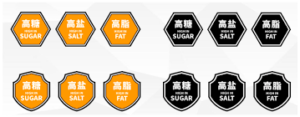China is set to revolutionize food labeling with the introduction of new draft guidelines that could reshape the way consumers navigate nutritional information. As part of its ambitious “Healthy China 2030” policy, the country is proposing a multi-faceted front-of-pack (FOP) labelling system. This voluntary yet standardized approach aims to enhance transparency in food packaging and may pave the way for mandatory implementation in the future.
The proposed guidelines feature four distinct types of FOP labels—marking a significant departure from the single-label systems seen in other countries. Each label will cater to different food categories and nutritional concerns, guiding consumers toward healthier choices. As food manufacturers await formal approval, experts believe this move will have far-reaching implications for global food standards.
A Four-Tier Labeling System
The new guidelines break down into four types of labels: warning, rating, encouragement, and informative. Each label serves a unique purpose based on the product’s nutritional profile, offering consumers clear, actionable information. This tiered approach aims to address growing concerns about unhealthy eating habits and diet-related diseases in China.
1.Warning Labels: Targeted at food marketed to children(aged 3-15 yrs of age), these labels are designed to flag high levels of fat, sugar, and sodium. Foods bearing these warnings will be restricted from marketing to children, a direct response to the country’s efforts to curb rising childhood obesity. It excludes cheese and processed cheese. If a product exceeds set thresholds for fat, sugar, or sodium, a warning label must be displayed, and the product cannot be marketed to children. For example, a food containing more than 23g of sugar per 100g would require such a label.
- Rating Labels: This label classifies foods into four grades—A, B, C, and D—based on their fat, sugar, and sodium content, with Grade A being the healthiest and Grade D the least. This label applies to all prepackaged foods, except cheese and processed cheese.

- Encouragement Labels: Foods in 10 designated categories, including dairy products, cereals, fruits and beverages, may use this label if they meet specific health criteria. For instance, solid beverages must contain no more than 10g of fat, 30g of sugar, and 250mg of sodium per 100g to qualify. They come with a “Smart Choice” logo to help consumers easily identify healthier products.

- Informative Labels: Similar to the rating label, the informative label is for all prepackaged foods. These labels highlight the fat, sugar, and sodium content per 100g or per serving, alongside its percentage of the Chinese Nutrient Reference Value (NRV%). If a product’s sodium level exceeds 800mg per 100g, the label must be printed in red as a warning.
A Global Trendsetter?
China’s decision to propose a multi-label system follows a global trend in FOP labelling, yet adds its unique spin by introducing encouragement labels. Many countries, such as those in Europe and Latin America, have already implemented their own systems to guide consumers towards healthier food choices.
In Europe, the Nutri-Score, a colour-coded system ranking foods from A to E, has seen wide adoption in countries like France, Germany, and Spain. In contrast, countries in Latin America have opted for stark warning labels, particularly in Chile, where black-and-white signs have significantly reduced the consumption of high-sodium and high-fat products. China’s system combines elements from these global standards, adding a new dimension by focusing on promoting healthier choices, especially for children. By taking this dual approach—offering both warnings and positive reinforcement—it may set the stage for a broader international adoption of similar models.
The Future of Global Food Labelling
As China leads the way with these draft guidelines, the global food industry is watching closely. Legal experts have noted that the voluntary nature of the system could quickly shift to mandatory regulation, especially as the nation progresses toward its 2030 health goals.
China’s unique approach may also influence future international food labeling practices, blending the best of European and Latin American systems with new strategies for encouraging healthier choices. With a growing focus on consumer health and transparency, the future of FOP labelling appears to be evolving rapidly—China is now at the forefront of this movement.
These guidelines, if fully implemented, will not only transform China’s food industry but could also have a lasting global impact, influencing the way the world thinks about food, health, and consumer choice.

